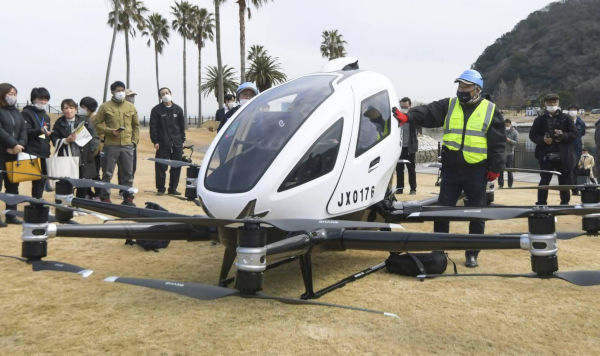Flying cars has always been seen as a next-generation mode of transport. They present an innovative solution to address issues of traffic, congestion, pollution, and other problems that plague urban transportation.

With their ability to cover shorter distances in a shorter amount of time, flying cars hold the promise of freeing up the roads for pedestrians, cyclists, and long-distance travelers. One of the significant benefits of flying cars is that they require minimal infrastructure and maintenance compared to ground vehicles, making them an attractive proposition.
On Friday, the idea of flying cars came one step closer to reality when a manned test flight was conducted in Oita Prefecture, southwestern Japan. Masc, a research group based in Okayama, carried out the trial using a two-seater flying car built in China based on drone technology.
The vehicle flew a pre-programmed route without a pilot at the controls, rising vertically to a height of 30 meters and then circling over the sea at a speed of 36 kilometers per hour for about three and a half minutes.
According to Masc’s chairman, Kirino Hiroshi, the aim is to turn flying cars into a commercial proposition, and the Transport Ministry noted that this was the first test flight of a manned flying car in an open space in Japan that it is aware of.
The future of flying cars is indeed promising, and the successful test flight in Japan is a significant step towards realizing this futuristic vision.
Flying car companies require more time and expertise before they can mass-produce flying vehicles. Design and engineering challenges are not the only problems that the manufacturers of flying cars need to solve.

Environmental, regulatory, and safety clearances are also essential factors that need to be taken into account. Issues such as noise pollution, take-off and landing infrastructure, limited carrying capacity, training for new pilots, and high costs present significant obstacles to the widespread adoption of flying cars.
Furthermore, as laws governing flying cars are still in their early stages, they must be developed to accommodate flying traffic.
Regulators are currently working to develop laws related to autonomous flying cars and personal air vehicles, which would ensure their safety and regulate their use.
































